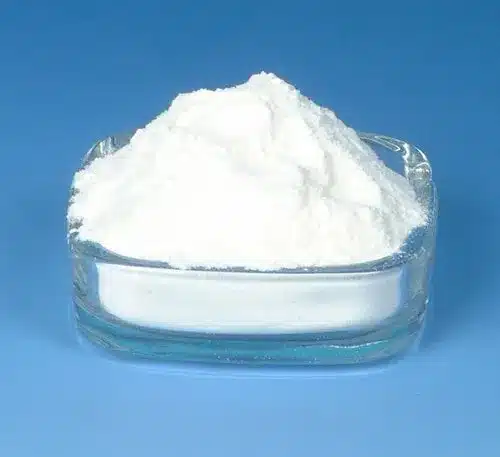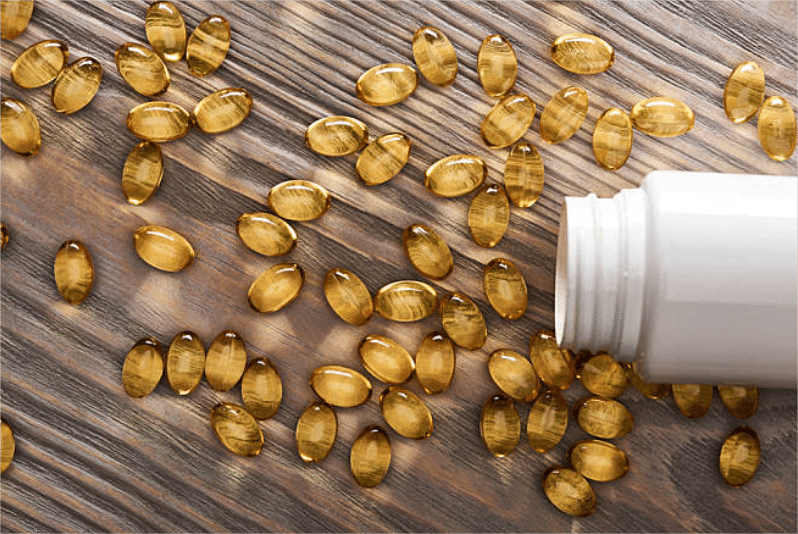Introduction
Gelatin and chitosan are unique biopolymers with various applications in food, pharmaceuticals, and health supplements. Despite their differing origins and properties, both are recognized for their potential health benefits. This article delves into their characteristics, uses, benefits, and possible side effects, providing a comprehensive comparison.
What is Gelatin?
Origin and Composition
Gelatin is a natural protein derived from collagen, a major component of animal connective tissues. It is obtained by boiling animals’ skins, bones, and connective tissues, mainly pigs and cows. Gelatin primarily comprises amino acids, including glycine, proline, and hydroxyproline.
Types of Gelatin
- Powdered Gelatin: Commonly used in cooking and baking.
- Sheet Gelatin: Preferred in professional kitchens for its precise gelling properties.
- Gelatin Capsules: Widely used in the pharmaceutical industry.
Nutritional Profile
Gelatin is low in calories and fat but rich in protein, containing around 85-90% protein by weight. Due to its amino acid profile, it lacks carbohydrates and is considered a complete protein.
Culinary Uses
Gelatin serves various culinary purposes, including:
- Gelling Agent: Used in desserts like jellies and marshmallows.
- Thickener: Common in soups and sauces.
- Stabilizer: Found in dairy products to maintain texture.
Health Benefits of Gelatin
Joint Health
Gelatin is often touted for its benefits in joint health. The amino acids it contains are believed to help repair and maintain cartilage, potentially alleviating symptoms of osteoarthritis.
Skin Health
Due to its collagen content, gelatin may improve skin elasticity, hydration, and overall appearance. Studies suggest that regular consumption can reduce wrinkles and enhance skin texture.
Digestive Health
Gelatin may support gut health by promoting the production of gastric juices, aiding digestion, and helping heal the intestinal lining.
Muscle Mass and Weight Management
As a protein source, gelatin can assist in muscle recovery post-exercise and promote feelings of fullness, which may aid in weight management.
Potential Side Effects of Gelatin
While gelatin is generally safe, some potential side effects include:
- Allergic Reactions: Individuals allergic to animal products should avoid gelatin.
- Digestive Issues: Large amounts may lead to bloating or discomfort.
- Medication Interactions: Consult a healthcare professional before use.
What is Chitosan?
Origin and Composition
Chitosan is derived from chitin, a biopolymer found in the exoskeletons of crustaceans like shrimp and crabs. It is obtained by deacetylating chitin into a soluble and versatile compound.
Nutritional Profile
Chitosan is low in calories and not a significant protein or carbohydrate source. It is primarily valued for its fiber content and ability to bind fats.
Applications
Chitosan is used in various industries, including:
- Food Industry: As a natural preservative and fat replacer.
- Pharmaceutical Industry: In drug delivery systems and as a supplement for weight loss.
Health Benefits of Chitosan
Weight Management
Chitosan is often marketed as a weight-loss supplement because it binds dietary fats in the digestive tract, potentially reducing fat absorption.
Cholesterol Reduction
Some studies suggest that chitosan may help lower cholesterol levels by preventing its absorption in the intestines, contributing to heart health.
Antimicrobial Properties
Chitosan has been shown to possess antimicrobial properties, making it useful in food preservation and wound care.
Digestive Health
Chitosan may promote digestive health by acting as a fiber source, aiding in regular bowel movements, and improving gut health.
Potential Side Effects of Chitosan
Chitosan is generally considered safe, but potential side effects may include:
- Digestive Issues: Some individuals may experience bloating, gas, or constipation.
- Allergic Reactions: Those allergic to shellfish should avoid chitosan.
- Medication Interactions: Consult with a healthcare provider, especially those on cholesterol or weight loss medications.
Comparative Analysis: Gelatin vs. Chitosan
Chemical Composition
- Gelatin: A protein derived from collagen, rich in amino acids.
- Chitosan: A polysaccharide derived from chitin, primarily composed of glucosamine.
Mechanism of Action
- Gelatin: Supports joint and skin health by providing essential amino acids for collagen synthesis.
- Chitosan: Functions mainly as a fat binder, reducing fat absorption and potentially aiding in weight loss.
Usage and Dosage
- Gelatin is commonly consumed in powdered form; typical doses range from 5 to 15 grams daily.
- Chitosan is often available in capsule or powder form; recommended dosages vary between 1 to 3 grams before meals.
Effectiveness
Both substances offer unique health benefits. Gelatin supports joint and skin health, while chitosan is often utilized for weight management and cholesterol reduction.
Applications in Various Industries
Food Industry
- Gelatin: Widely used in confectionery, desserts, and as a stabilizer.
- Chitosan: Used as a natural preservative and fat replacer.
Pharmaceutical Industry
- Gelatin: Commonly used in capsule production and drug delivery systems.
- Chitosan: Gaining popularity in weight loss and cholesterol-lowering supplements.
Cosmetic Industry
- Gelatin: Occasionally used in skincare for its hydrating properties.
- Chitosan: Increasingly included in formulations for its antimicrobial benefits.
Conclusion
Both gelatin and chitosan offer distinct benefits, making them valuable in various applications. While gelatin is celebrated for contributing to joint and skin health, chitosan is recognized for its weight management and cholesterol-lowering properties. Understanding their differences can help consumers make informed choices based on their health needs. Always consult with a healthcare professional before starting any new supplement regimen.




